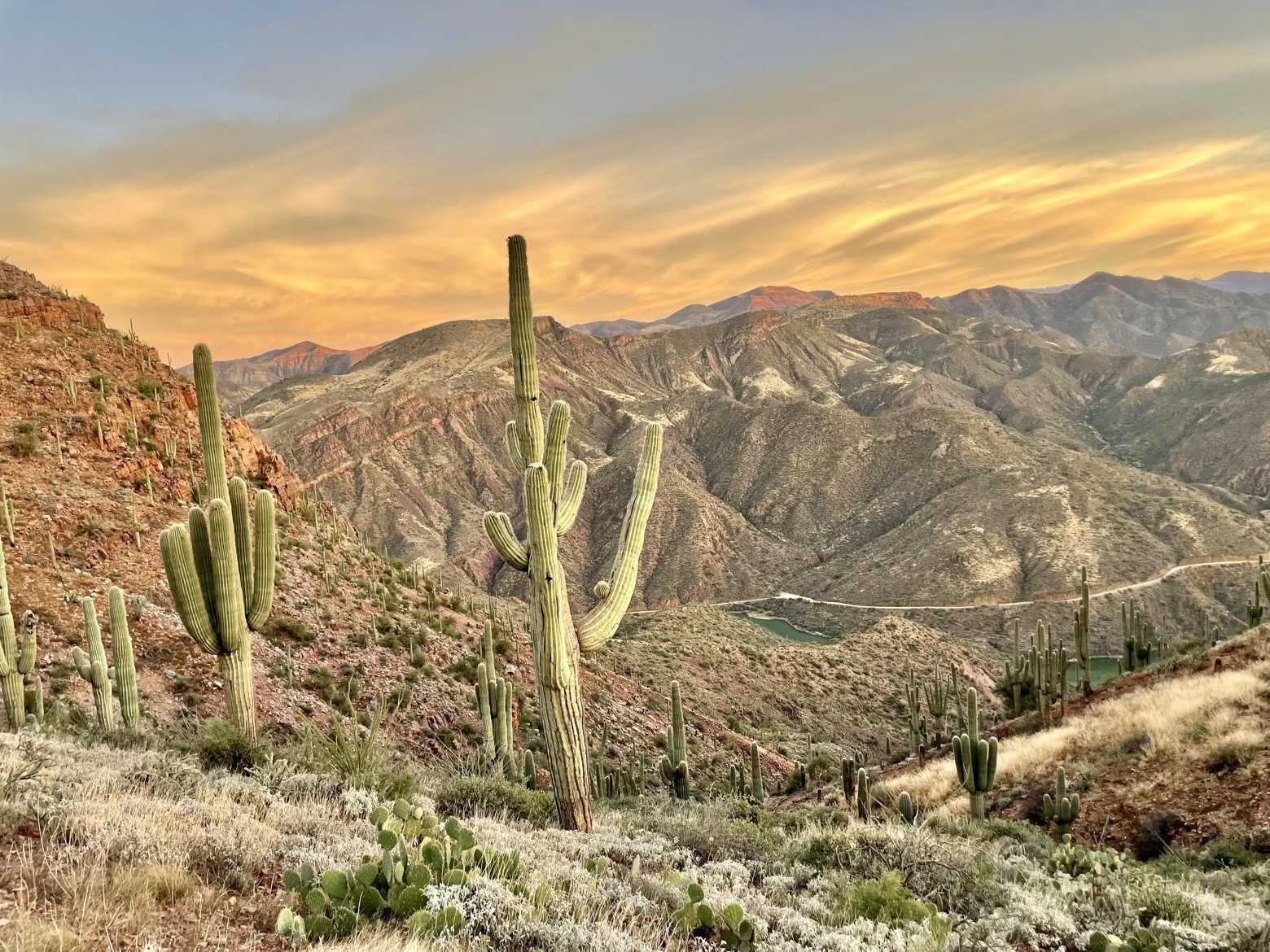Date: 10/24/21
Miles: 22.7
Total Miles: 422.8
Your eyes are not your friend. Well, part of them anyway. The eyes that soak in every shade of the flames of sunrise emanating from the eastern horizon and illuminating Roosevelt Lake far below? That part is telling you the truth. The other part that tells you that lake—the destination of our next resupply tomorrow—doesn’t look so far away? That’s the lying part.
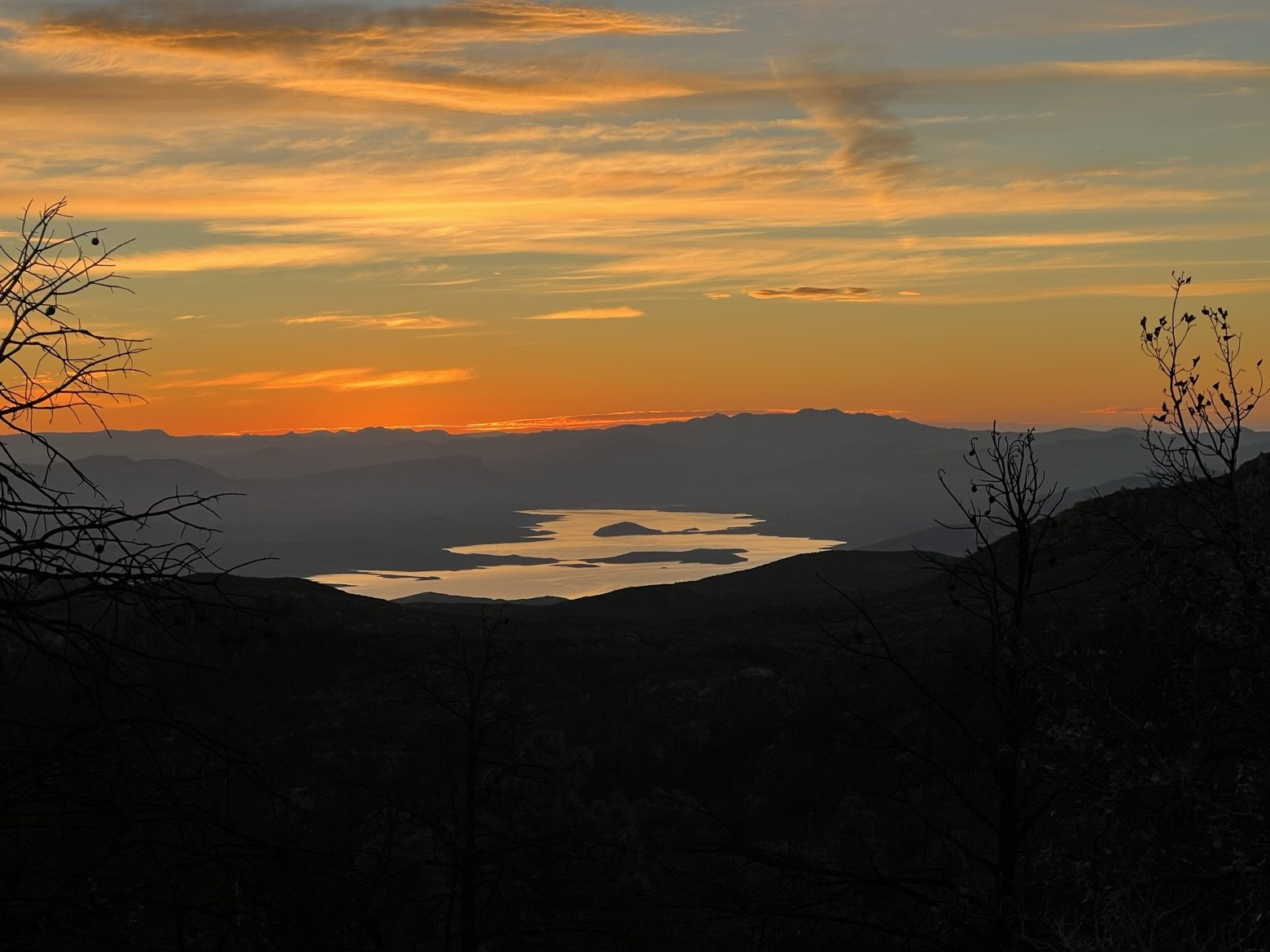
Foreshortening is a bitch. Combined with the fact that despite how potent our visual acuity is at close range, our ability to judge distance is incredibly poor, and you have every ingredient necessary to understand why distant objects seem to be not an inch closer even after hours of walking towards them. That, and trails have a funny way of very rarely tracing anything remotely approaching a straight line.
This rude reality was never more apparent than in the morning hours between watching the sunrise over Roosevelt Lake and continuing our road walk to the Four Peaks Wilderness that had begun yesterday evening. Miles may have passed, but our destination just a few miles above the shore of the lake looked impossibly distant.


Dropping off the road and onto trail just before reaching the wilderness boundary, we began a traverse that ran for all of ten miles without a switchback. Clinging to the eastern slope of first Browns Peak and then Buckhorn Mountain, the trail gained and lost only small bits of elevation while it wend its way from one drainage to the next rounding every contour in its path.

As I lifted my foot to take a step onto a white piece of stone streaked with red, I paused to watch a desert tarantula stroll casually, almost regally, up the very rock I had intended to step on. On it went in the opposite direction, in no particular hurry but without pausing to admire the view. At 4-5” long, it was an impressively intimidating sight, but it felt far more like I was witnessing a pleasant daily commute than a scene from a horror movie.
Like so much of the west, this part of Arizona has been no stranger to wildfire. In 2020, fire swept up the very slopes we now traversed, triggering a cycle of renewal and succession. As predictable as it is daunting, that renewal means a number of things for trails: little to no shade; soil—and thus footing—that is less stable; and overgrowth. Lots and lots of overgrowth.

It should be said that when wildfire rages across a landscape it does so twice: first as a wildfire of destruction, and second as a wildfire of regeneration. With a canopy newly opened to the sky, all manner of first succession plants vie for their literal place in the sun in the beginning of a new race to see which plants will outcompete the others for that sweet, sweet sunshine.
Without an army of trail volunteers to religiously maintain the trail corridor, nature reclaims its own, and fast. Swallowed by a sea of fast growing shrubs making the most of their newfound moment in the sun, the trail all of a sudden takes on the character of the fragile and fleeting thing that it is.
Where did that leave us? Fighting even harder for the miles that would move Roosevelt Lake precious inches closer in our consciousness, like two little brush plows forging ahead.
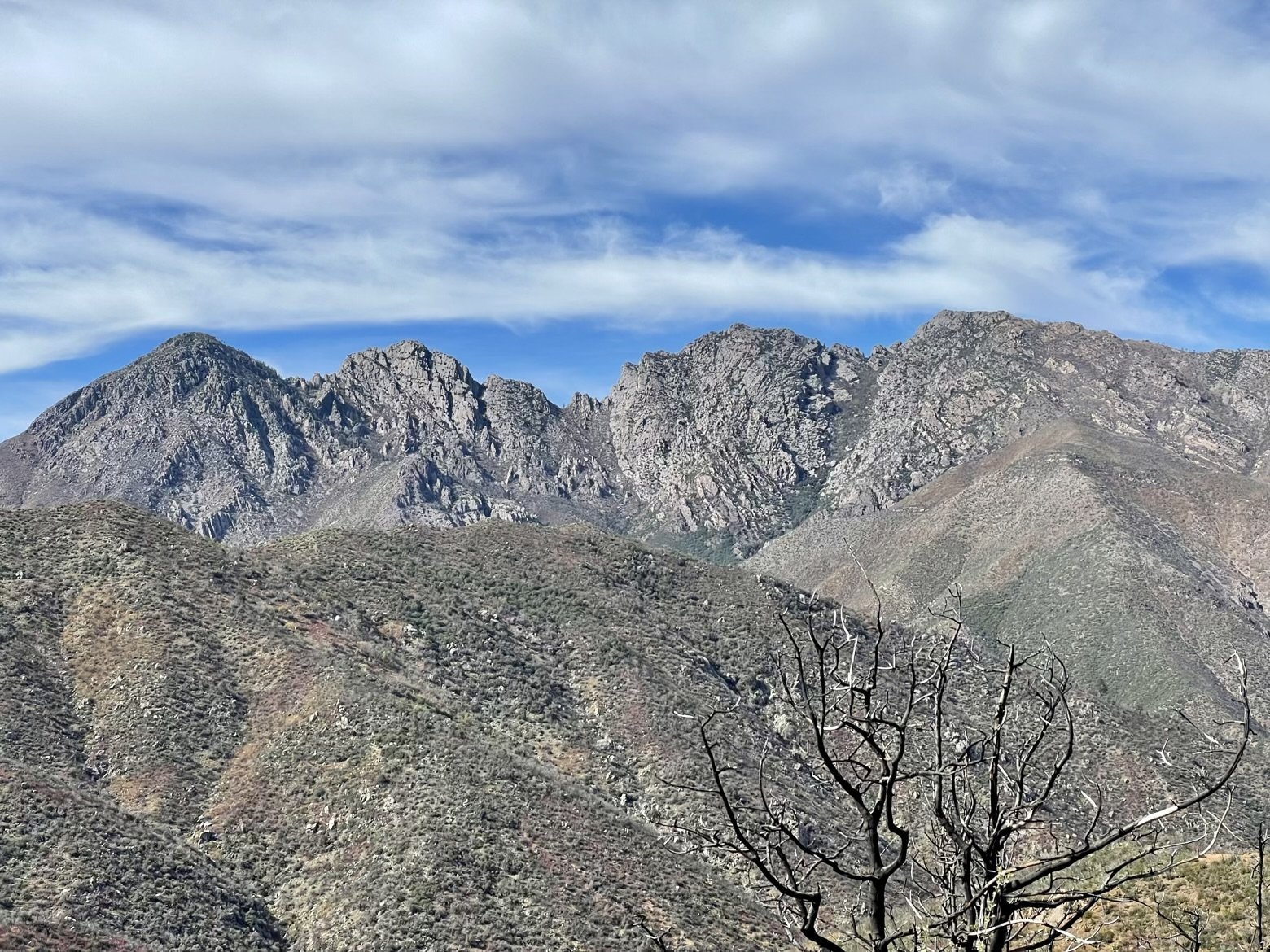

Not long before exiting the Four Peaks Wilderness, the impact of the past wildfire came to an abrupt end and the overgrown trail finally relented, replaced by an open corridor between manzanita hedges. The descent from the peaks grew more insistent, enlarging the lake as we now made a beeline straight for its broadside.
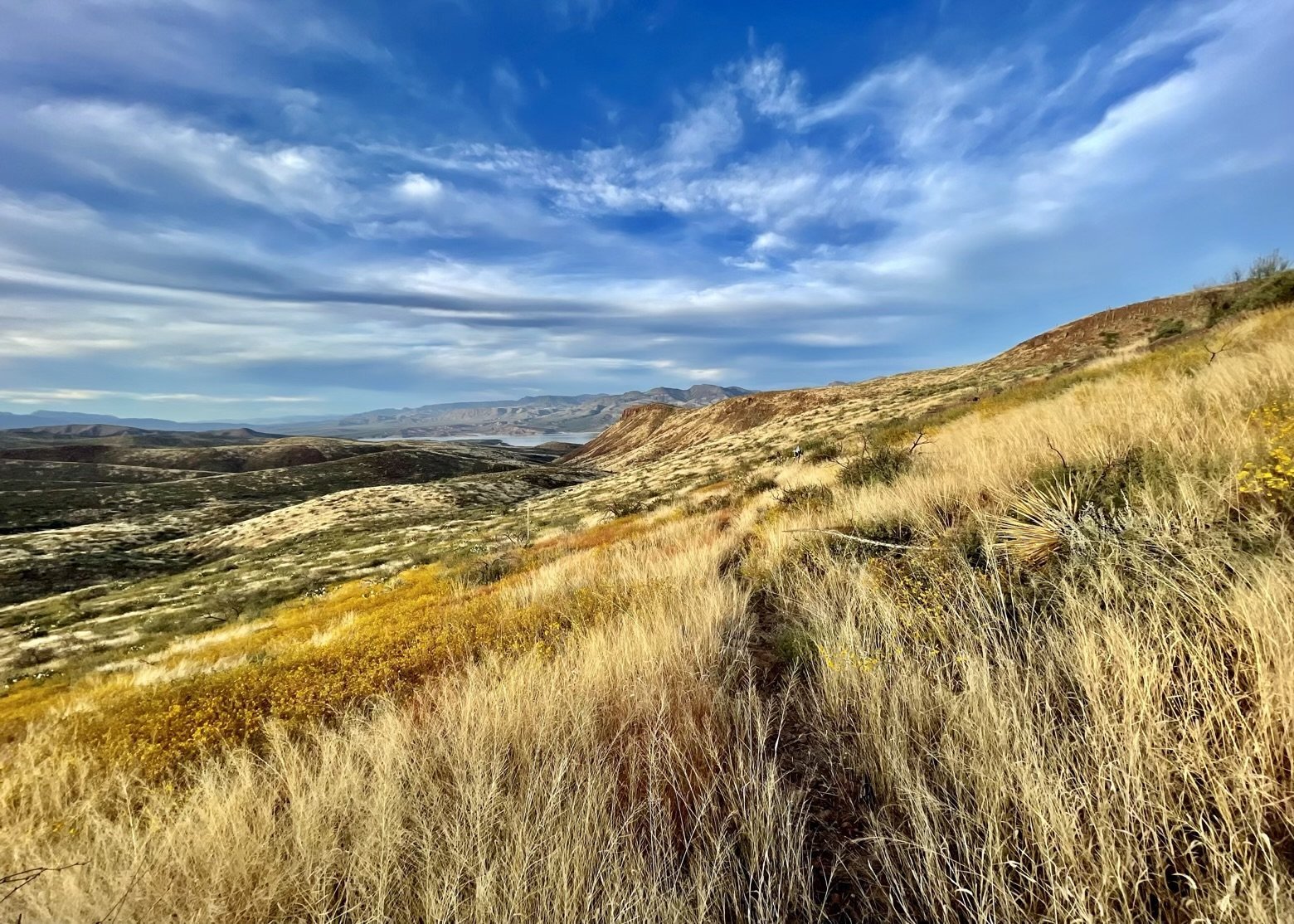
Like little toy soldiers that grew in height the closer we neared to them, a new sight came crawling up the slopes toward us: saguaro. Frozen in their uphill advance by some unseen force, these icons of Arizona stood tall and stately—many higher than 20 feet—while some were firmly planted mere feet from their closest neighbor, their candelabra arms outstretched as mirror images of one another as if ready to dance the waltz to music that would begin at any moment.

Past the saguaro poised to begin their dance, as we neared our destination telltale yellows and pinks began to paint the sky, harbingers of the conflagration that would soon consume it. Like the fire of sunrise, and mirroring the literal fire that had consumed the slopes of the trail not long ago, the first flames of sunset licked the cloud swirls that stretched for miles. A desert fire above our very heads.
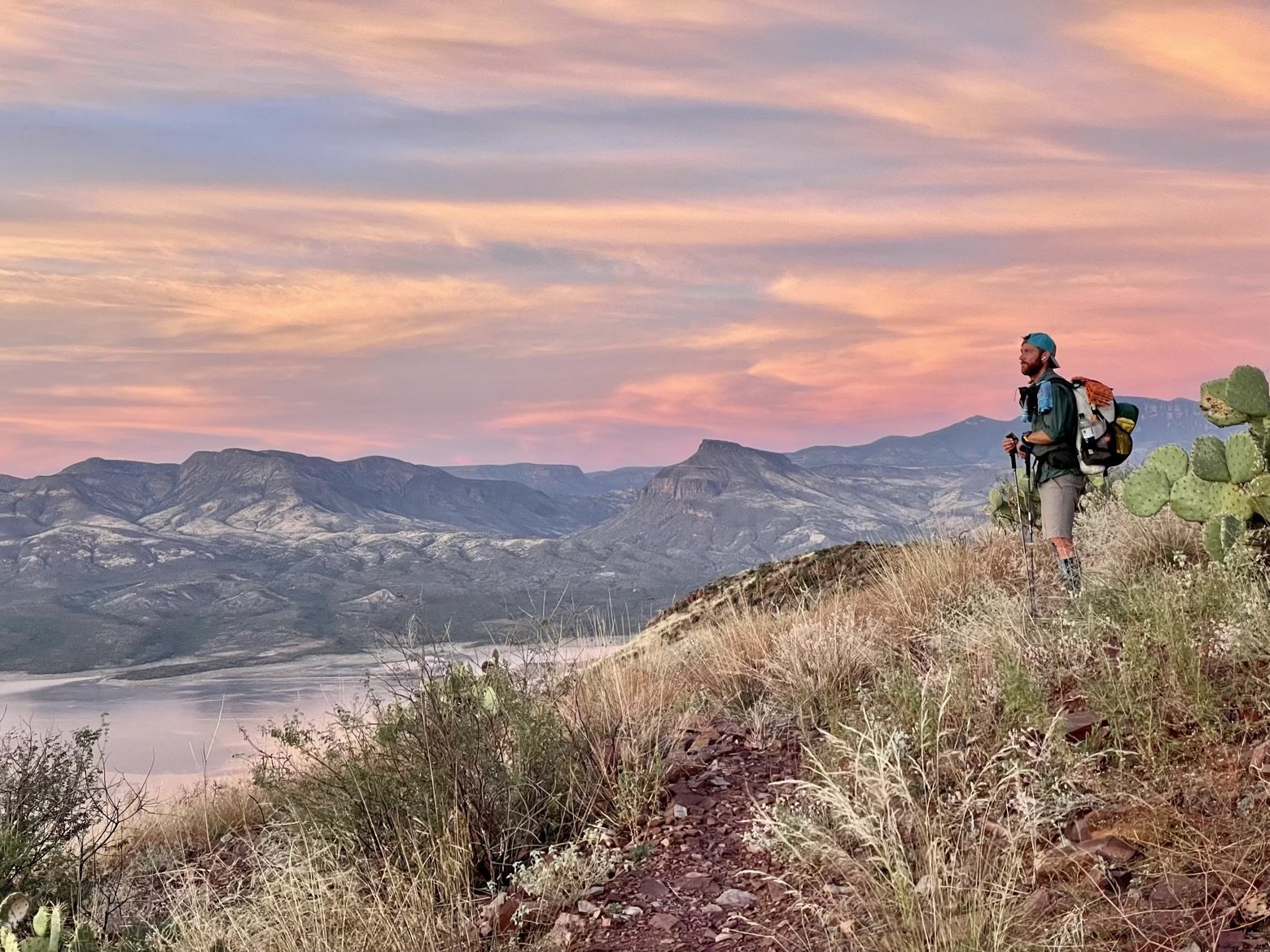


Latitude/Longitude: 33.67378,-111.17686

